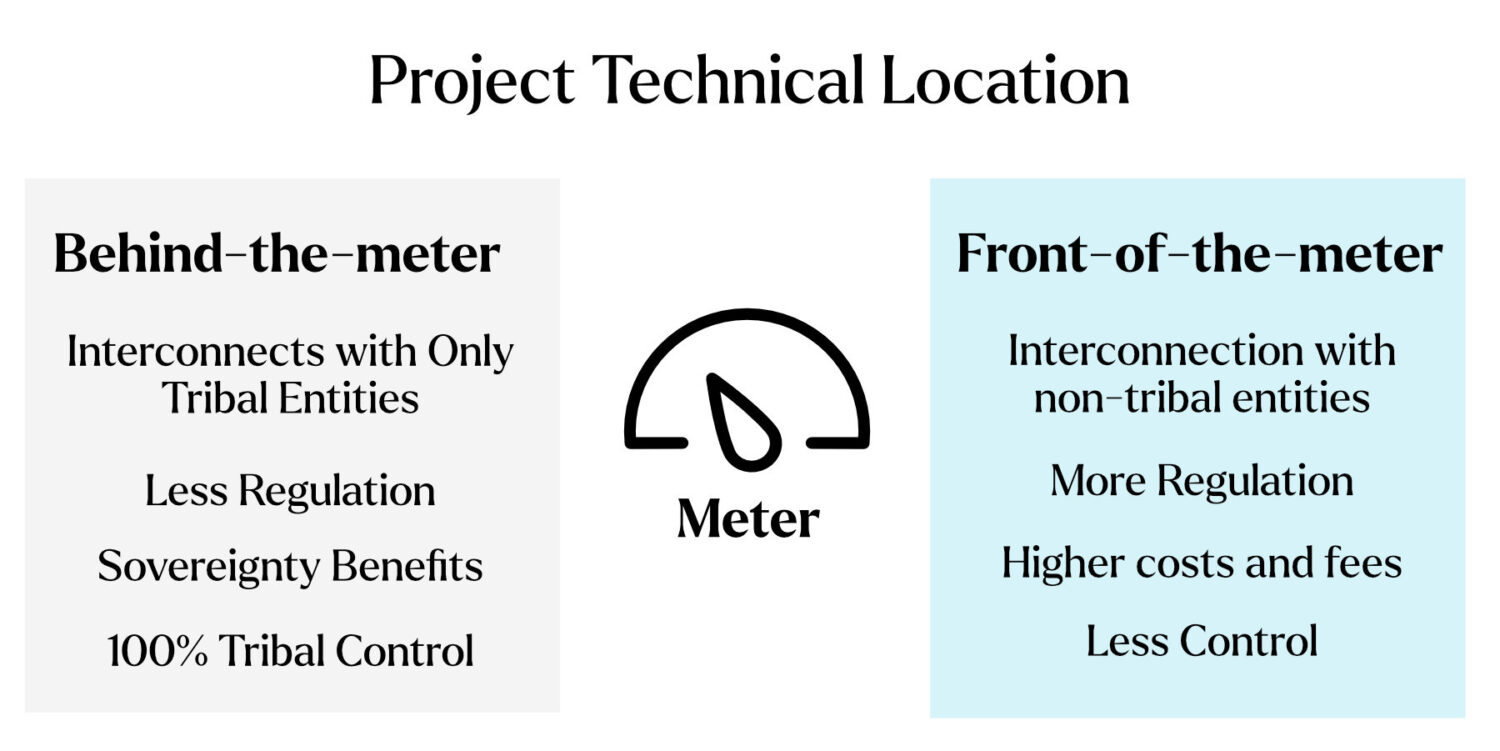The energy space is ripe with potential for Tribes — from energy generation, transmission or even creating your own Tribal utility. I would like to give you an overview of the opportunity and then 5 essential steps Tribes must take during evaluation or implementation of energy projects. While the information in this article is applicable and useful for many energy markets, it will focus on energy generation projects within Tribal boundaries.
The Energy Market Potential
Energy is a Largely Untapped Massive Source of Revenue
Energy generates remarkably high revenue. Electricity generation across the USA over the last year, that is megawatt hours generated — according to the EIA’s 2021 report it was almost $425 billion in total revenue. A report from NREL (National Renewable Energy Laboratory) projects that Tribes could have 6-8% of the total theoretical electricity generation potential from all renewable sources or about 21,000 terawatt hours (TWh). In 2021, the average national retail price of electricity was approximately $110 per MWh.* This translates into a theoretical $2.3 trillion potential revenue opportunity for Tribes. Even if the entire theoretical renewable generation potential of Tribal Lands is not reached, this still represents a massive opportunity to create generational wealth and energy independence for Tribes by entering the renewable power markets.
For perspective, let’s compare this number to another source of revenue— gaming. Gaming as a whole, including Las Vegas, is almost $85 billion in revenue over the last year. Tribes account for almost $60 billion of that total. By simply looking at these numbers, we see that energy development, with time and investment, could be much, much larger than gaming. However, the current presence of Tribes in the energy space isn’t even close to gaming and has considerable room to grow. Keep in mind, this is just using land as a site for renewable energy generation. There are many other revenue streams within the larger energy markets.
“Energy development could be two to three times larger than gaming.”
Unprecedented Funding
The transition into a carbon-less renewable electrification system is being funded now in massive amounts. There is an unprecedented amount of federal funds available for renewable energy, grid scale, stored energy, and more. The opportunity is something that’s never happened before and probably will never happen again, simply based on the size of the deficits being created.
The Tribal Advantage – Sovereignty
The regulatory framework of the energy has a long history that significantly complicates and hinders progress for most developers and entities entering the energy market, but Tribal sovereignty is the answer to that problem. Tribes still deal with regulatory bodies but can bypass many of the different state and local government layers that are normally part of the process because they are sovereign nations.
With the right understanding of the process, Tribes can leverage their sovereignty to make energy projects within Tribal lands a reality. Further down this article, we explain 3 ways Tribal sovereignty can play a major role in your energy projects.
5 Essential Steps for Planning Tribal Energy Projects

1. Create a Tribal Energy Strategy
The first step is to create a Tribal energy strategy with goals and processes in place for achieving your energy projects. The best place to start is to figure out what you’re trying to accomplish. Do you want to electrify all of your buildings and have the ability to completely disconnect from the grid? Do you want to control who and how electricity comes to you? Do you want to guide the incumbent utility operations? This is necessary because the energy space is going to outlive any current leaders and sets a vision for the future of a Tribe’s energy. It allows leaders to articulate goals to outside stakeholders, internal stakeholders, Tribal members, and staff. And, it becomes a vetting process for new ideas and projects. Does this fit our Tribal energy vision and strategy? Whether a developer comes to a Tribe with a project or an internal idea from another Department, a Tribal energy strategy quickens the decision-making process before wasting any time or resources and it streamlines the process for any Tribal energy project you take on.
“Tribes need an energy vision because energy projects are going to last for several generations.”

2. Assess Your Tribal Capacity
Leaders should start by evaluating Tribal capacity for an energy project with a comprehensive assessment. That is, understand who you have on staff and what skills and experience they have that are applicable to energy projects. Do you have the staffing expertise for identifying land requirements? A small biodigester (a system that transforms your organic waste into a useful energy) has completely different land requirements from a 25 megawatt grid-scale battery storage or a large solar array. There’s also specialized infrastructure expertise that is needed that can differ from the traditional infrastructure like transmission, roads, water, etc. In addition, there are regulatory needs like legal ordinances, permits, and environmental reviews that can be very complex to navigate. All energy projects touch on these different factors throughout the various stages of its lifecycle and a Tribe needs to assess its existing capabilities to address them.

3. Understand the Regulatory Framework
With any Tribal energy project, it’s crucial to understand the regulatory framework it will be operating under. There are many moving parts and Tribes have the unique advantage that they can bypass a tremendous amount of oversight due to their sovereignty. But it is still essential to do your due diligence with regulatory research as small mistakes at the front end get magnified very quickly and turn into very big dollars at the back end of these projects.
Here are 5 important regulatory considerations to look at with each new project:
Is the project going to be connected to the grid or ISO/RTO?
An ISO/RTO is an independent system operator or regional transmission organization. These are big companies that operate the bulk power system at 100K volts and higher. They set the market rules and ensure reliability and resiliency of the electric grid system. By interconnecting directly with the bulk power system, a Tribe avoids having to work with the incumbent utility and also eliminates any oversight of the state power authority. However, in order to achieve this interconnection, the Tribe must purchase and construct its own electric facilities, which can cost several million dollars. The substation that the Tribe constructs also needs to be close to a bulk power transmission line or the Tribe has to be willing to fund the building of the transmission line to their substation within Tribal Trust Lands. These network upgrades can be costly, so significant due diligence efforts are needed to ensure the financial feasibility of development. Some Tribes may elect to interconnect even if they do not save significant amounts of dollars just so they can exercise their sovereignty and build energy independence for their Community.
What potential oversight does the State Public Service Commission have over the project?
If your project is built outside of Tribal Trust Land there is potential for state oversight from the State Public Service Commission. Incumbent utilities will also try to protect their monopoly which means potential exposure from the State Public Utilities Commission. In these situations, Tribes aren’t as protected by their sovereignty.
What advantages does Tribal Sovereignty provide?
The first major advantage is that Tribes aren’t beholden to the state’s tariff rate structures, paying for legacy assets that are owned by the incumbent utilities, or being taxed by the state. A Tribe just has to figure out how to pay for the development of its own electric distribution system. By owning its own system, a Tribe can buy energy at wholesale prices and develop its own tariff rate and taxation scheme to generate a return on its electric assets. If the Tribe uses its wholesale buying power to attract non-Tribal commercial and industrial customer to lease their Trust Land, they could use lower power and taxation rates to induce non-Tribal customers to relocate within Tribal boundaries. This can only be accomplished because the Tribe is a sovereign entity.
What existing agreements between the Tribe and other parties that might impact energy development?
What easements are running through Tribal lands? Have they been filed correctly? Do they expire soon? What can the Tribe do to manage easements to make sure that any energy assets running through its boundaries are being compensated for? Not every easement is straight-forward but it is worthwhile figuring out how easements could impact a project.
What tax compacts exist with the state or local government entities? Many Tribes have entered into compacts to share or distribute tax or other revenue to local governments. Does a new Tribal energy tax or project conflict with existing agreements? Part of a robust pre-project due diligence is to identify and quantify risks or secondary effects of energy development and power sales, especially to non-Tribal entities.
Is the project selling power to non-Tribal entities
If you are generating energy and selling power to non-tribal entities, even within Trust Land, there are regulations from the Federal Energy Regulatory Commission (FERC) that may need to be followed. A legal team that really understands FERC regulations can be of enormous value understanding the regulations. Failure to follow regulations can lead to legal trouble that gets expensive very fast. Only a small number of lawyers specialize in FERC issues and they are expensive but many times worth the investment. They can also help structure a lease or operating agreement that includes power sales to help avoid some of these regulatory land mines.
Project location considerations
Is the project location on trust land or is the title held in a different format? This answers identifies whether the State Service Commission or other regulatory body has oversight on the Tribe’s energy project. It’s not uncommon for projects pitched next to trust land or where a Tribe thinks is part of the Reservation but is actually not owned by the Tribe. Land within reservation boundaries doesn’t always mean that the Tribe owns it. There are several Reservations that have a patchwork of trust, fee, and allocated lands. For projects with a large geographic footprint (i.e. wind) making sure all of the equipment is within Trust Land boundaries is critical for the Tribe to maintain control.

4. Evaluate if the Project Is a Right Fit
Thus far we’ve covered important steps that should be addressesed by Tribal Leadership before even having energy projects on the table. Steps 4 and 5 dig into project evaluation. It should be noted that the first 3 steps despite being broad and should be done ahead of time, should always be revisited when considering a new energy project.
Your Tribe’s Role in the Project
What is the role of the Tribe in the energy project? Energy projects most of the time come from a developer that identifies a plot of land within a Tribe and seeks partnership with the Tribe or a lease to bring it to fruition. However, what that partnership looks like and how the Tribe benefits depend on the role that the Tribe wishes to take.
Owner, operator, and power marketer — a lot of day-to-day oversight and functions like a utility.
The Tribe owns all the system components and is responsible for all maintenance and repairs. The Tribe operates the generation equipment and is responsible for the safety and reliability of the operation of the equipment and the power created. As a power marketer, the Tribe finds buyers of its power and manages the power purchase agreements and is responsible for the physical and financial fulfillment of those contracts.
Regulatory oversight and taxation — a developer leases Tribal lands to build their equipment, handles the interconnection, and sells the power. The Tribe simply dictates the regulations and collects both a lease payment on the land and taxes from the power that is generated.
Passive Investment — the Tribe leases the land and has no direct involvement in the project. The Tribe makes sure the counter-party is following the terms of the lease agreement and managing the payments. Tribes with more land can have leases with 10, 20, or more developers each with their own unique leases. Just managing leases turns a simple concept into a very active and complex lease management business despite the Tribe’s passive role in the energy generation.
Off-take agreement/Power Purchase Agreement (PPA) — The Tribe has an agreement to purchase a certain amount of the power generated by a developer which allows the developer to seek financing to bring the project to fruition. For example, a casino that needs 15-20 megawatts creates a really strong case for developers to secure their loans because the banks are evaluating the counter-party’s ability to continue to purchase power and pay off the loan.
Technical Location of the Project
A great deal of a project is defined by the distribution systems it is part of and any interconnections it may have, including interconnections with other adjacent non-Tribal utilities. The goal is to understand whether the project generates and distributes energy just within Tribal distribution systems within Trust Land or if the power flows outside of Tribal boundaires to other non-Tribal utilities or entities. We refer to this as the technical location of the project as opposed to the physical location. There are two main technical locations where a project can exist:
Front-of-the-meter (FTM) – Interconnects with the bulk power or a utility grid system or has an interconnection with a non-Tribal entity. Typically, In any electrical system there is a meter that defines the boundary between systems and this meter measures the power flowing into and out of the system. This means the project will be subject to many more requirements with RTO/ISO, incumbent utilities, FERC, or state public utility commission. The regulatory bodies and oversight of these kinds of projects can quickly ramp up the cost of your project with legal fees, tariffs, connection fees, and more. An important factor in your decision-making.
Behind-the-meter (BTM) – Typically 100% controlled by the Tribe and only interconnects to Tribal entities. The Tribe also consumes all the power generated and there are not any excess power generated or sold. Tribes can leverage their sovereignty and energy independence with this model along with benefiting from much less regulation. This model is common with Tribal microgrids that have the option of either using power generated from behind-the-meter renewables or taking power from the grid or utility.

5. Prepare for Implementation
After a thorough evaluation process, Tribes need to plan for the implementation and management of the project. Energy projects are long-term assets that change over time and have many costs along the way and long after its been built.
Consider the following when moving into the implementation and management of the project:
Identify Tribal capital contribution – How much is the Tribe paying upfront, for on-going maintenance, and for expansion in the future? Power loads don’t remain static. They grow over time and require financial planning to meet the growing demand. As the system ages, maintenance and repair costs will increase. The capital contribution is not just for the initial construction of the electric system, funds need to be retained to purchase backup parts or identify emergency funding for major components that must be repaired or replaced in the event of a catastrophic incident. Not having enough funding to meet reliability needs could have major negative impact on the project.
Identify outside capital sources – What other outside sources of capital can serve as a contribution to the project? A few examples include— national labs across the country that offer free technical assistance for feasibility studies; ESG (Environmental, Social, and corporate Governance) funds that invest in disadvantaged communities; opportunity zone funds; new market tax credits; and more. However, these outside sources of capital will add layers of complexity to your project. Consider if the cost of managing these capital sources is worth the funding being received. Federal grant and loan guarantees also require a certain level of compliance with how the funds are used and managed. The Tribe must have the internal accounting and grant management capacity in order to successfully manage these funding sources. Not managing the process correctly could result in the Tribe being excluded from future federal grant opportunities.
Tribal permitting & environmental review – Most Tribes have a good understanding of what’s in and under the land that they own but large development projects like these have the potential to uncover environmental factors that could delay the project such as an endangered species or a culturally sensitive area. Taking the extra precaution to do thorough environmental reviews in the planning process could save a tremendous amount of money in engineering studies, site work, permitting, and more. Additionally, Tribes that intend to lease land areas with an approved HEARTH Act lease might be able to use their own internal capacity for an environmental study. The Tribe could charge the developer for this assessment as part of the lease, thereby creating a new revenue stream for the Tribe.
Feasibility & engineering – Is this a responsibility of the developer or does this need to be outsourced? Depending on the type of energy project, the feasibility study is important to understand the economics of the deal as well as identify critical risk factors. Even if the Tribe is not directly involved with the project, it should be prepared to create its own feasibility study to verify the developers or project proponents’ economic claims. These leases and projects have a long lifespan, so the Tribe is entering a long-term agreement with another party. Understanding and verifying all aspects of the project are important to make sure interests are aligned and the purposes are communicated clearly to the Tribal Community.
Energy Will Outlast You
Energy development is an opportunity for long-lasting benefits for your Tribe. With a well-established Tribal energy strategy and enough planning, a Tribal energy project will outlast current leadership and continue to serve many future generations. In this article, we only covered the potential of using Tribal land for energy generation, but there are many opportunities that Tribes can use to tap into the energy market and leverage it to grow their tribal economy. Over the next 15 to 20 years, we think we’ll see more and more the value of Tribal sovereignty when competing for these growing renewable energy markets. It’s going to open up vast and diverse doors for Tribes to benefit their Tribal members. Energy has the potential to drive future economic development activities in ways that revenue from casino operations cannot. These new opportunities create new challenges and the more foundational investments the Tribe makes in ordinances, Tribal regulations and Tribal tax codes, before actually building a project will pay immense dividends that will help secure a prosperous future for the next seven generations.
Resources:
Milbrandt, Anelia et al. (2018) Techno-Economic Renewable Energy Potential on Tribal Lands. National Renewable Energy Laboratory. https://www.nrel.gov/docs/fy18osti/70807.pdf
Developing Clean Energy Projects on Tribal Lands. (2013) National Renewable Energy Laboratory. Retrieved from https://www.nrel.gov/docs/fy13osti/57748.pdf
“Table 5.6.A. Average Price of Electricity to Ultimate Customers by End-Use Sector” U.S. Energy Information Administration. (September 2022 and 2021) https://www.eia.gov/electricity/monthly/epm_table_grapher.php?t=epmt_5_6_a
Kevin brings expertise in assisting Tribes in building stronger and sustainable economic foundations. In his previous work he was responsible for all aspects of energy development for Tribes and managed the power needs for Tribal operations and the non-Tribal commercial and industrial tenants located within the Tribe’s Trust Lands. His experience is rounded out with the creation and implementation of Tribal Cannabis Ordinances, along with deal sourcing, due diligence, and strategic analysis of startup and venture capital investments and non-gaming mergers and acquisition activities.

